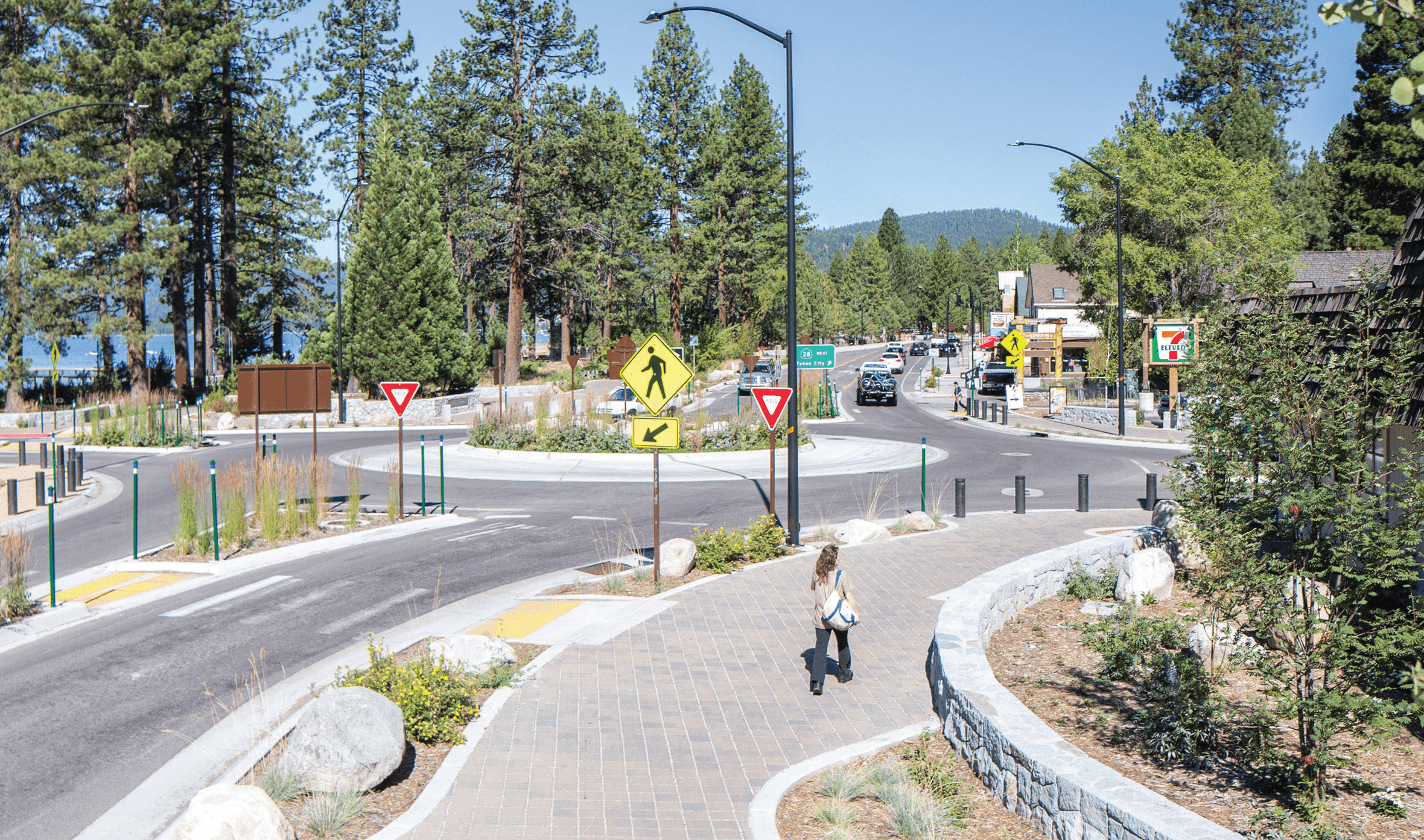
News
By State Smart Transportation Initiative, June 18, 2024
Whenever an agency plans to develop new community assets—whether it is a road, utility, or sidewalk—they must have systems such as funding and coordination for regular maintenance in place to preserve them in the long term. Often, especially in the case of sidewalks and other facilities that fall outside the roadway, some of those maintenance responsibilities fall on local authorities. Having those systems in place and a concrete plan to coordinate with local agencies can preemptively address unique challenges related to Complete Streets projects. Smart Growth America and the State Smart Transportation Initiative worked with practitioners to illustrate how their peers have found ways to overcome these obstacles to asset maintenance and sustainability.

Challenges to managing and maintaining assets
1. New facilities can be challenging to track.
State agencies regularly track bridge and pavement conditions through advanced asset management systems, but they are not always set up to track assets like sidewalks, bike lanes, and curb ramps. Doing this often requires more data collection procedures, new performance measures and rating systems, and prioritization methods, according to a report from UC Berkeley.
2. The state DOT may not be prepared to maintain facilities within the roadway.
While local authorities are often responsible for maintaining new sidewalks and other features outside the roadway, Complete Streets can include features within the roadway—parking, bike lanes, refugee islands, and protective barriers—that present new challenges for cleaning and snow removal. Keeping a protected bike lane clear of snow, for example, can require specialized plows, which must then be distributed across the state near those facilities. Other features can be easily damaged by plows and maintenance vehicles, or cause damage to the vehicles themselves. This requires preparation and funding on behalf of the state DOT and coordination with the state DOT during the project planning process.
3. Local agencies may not be prepared to maintain facilities outside the roadway.
When it comes to maintaining facilities outside the roadway, local authorities are presented with similar challenges, among others. Limited funding for asset maintenance is one obvious barrier. Maintenance agreements between state and local agencies are another. This includes not only the challenges of enforcing those agreements between agencies, but also ensuring the agreements cover logistical details like where plowed snow should be stored.
How agencies are managing and maintaining assets
1. Plan for new assets.
State agencies should be prepared to expand their existing asset management programs to include a range of Complete Streets facilities, along with rating systems and maintenance procedures. A comprehensive database with information on assets and features such as pavement markings, post delineators, and coordinates of bike and pedestrian facilities can produce a consolidated maintenance schedule that indicates current safety information.
Early discussions with local authorities on project scopes and service agreements also help to avoid confusion on the timeline and payments, and build stronger partnerships. For example, North Carolina DOT started to flag Complete Streets elements throughout its planning for maintenance projects with local stakeholders to increase the chances that Complete Streets assets will be awarded funding.
2. Be prepared to take on new responsibilities.
Some agencies have had success in taking on or assigning new maintenance responsibilities by establishing interdisciplinary teams that can establish consistent processes and provide routine feedback. For example, North Carolina DOT formed a work group to form a strategy for local maintenance requirements. This resulted in new, clearly defined policies for the state to take over certain maintenance commitments in unincorporated municipalities.
Changes in how facilities are designed can also make maintenance easier and make projects more viable. Some agencies have found that while protected facilities are generally safer for users, they can be more challenging or costly to maintain, thus introducing new safety concerns or local pushback. This has led some states to modify the design of facilities to make implementation more feasible. One agency, for example, sometimes opts for rumble strips or wider buffers in cases where local governments do not have the capacity to take on maintenance.
3. Support local agencies.
Just as early and ongoing coordination with local agencies can help in the planning and funding of Complete Streets projects, it can also be critical to ensuring that new facilities will be reliably maintained. This is especially true when local agencies are required to assume responsibility for those facilities, as is often the case. Good coordination can result in facilities that are designed with maintenance in mind from the beginning of the project, stronger and clearer maintenance agreements, and additional state maintenance support for local agencies, including assistance in scoping out costs.
While state agencies sometimes design facilities in the roadway so they are easier to clean, plow, or maintain, they can also design off-road facilities to minimize maintenance needs. Several agencies, for example, pour thicker sidewalks to prevent damage from snow-clearing and other maintenance equipment. These agreements can sometimes include additional funds for things like drainage, signals, striping, and ADA-compliant ramps.
Limited staff capacity can also be a major issue in maintaining Complete Streets facilities, at both the state and local level. State agencies can establish service agreements with contractors and work with local agencies to establish their own agreements. We heard from workshop participants that limited staff capacity can be a challenge in both large and small communities, but for different reasons. Whereas smaller communities have less staff capacity, larger communities often have more facilities to maintain.
Learn more
State DOTs in California and North Carolina have found innovative ways to manage and maintain Complete Streets projects. Read our case studies to find out how.
Managing and maintaining assets in California and North Carolina
The Centers for Disease Control and Prevention provided support for this project under cooperative agreement OT18-1802 supporting the Active People, Healthy NationSM Initiative, a national initiative led by the CDC to help 27 million Americans become more physically active by 2027. Learn more: https://www.cdc.gov/
Related News

© 2025 Smart Growth America. All rights reserved
Site By3Lane Marketing


















